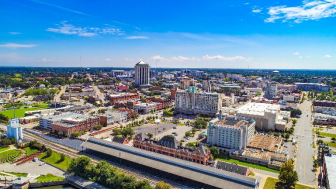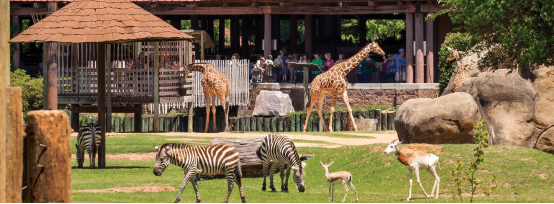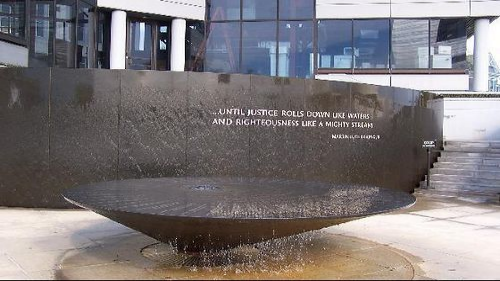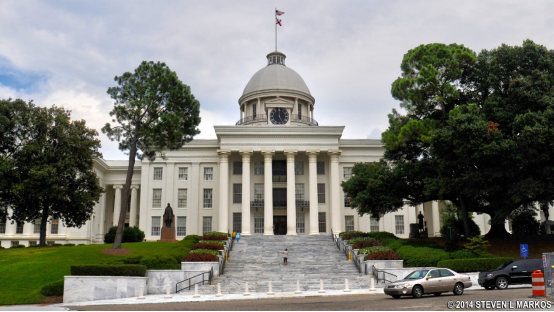Montgomery, Alabama 作者: 来源: 发布时间:2021-07-19
I.Population and Area
₋Area
Land: 159.94 sq mi (414.26 km2)
₋Population
Total: 205,764
Density: 1,241.21/sq mi (479.23/km2)

II.Natural Geography
₋Montgomery is the capital city of the U.S. state of Alabama and the county seat of Montgomery County. Named for Richard Montgomery, it st ands beside the Alabama River, on the coastal Plain of the Gulf of Mexico. In the 2010 Census, Montgomery's population was 205,764. It is the second most populous city in Alabama, after Birmingham, and is the 118th most populous in the United States. The Montgomery Metropolitan Statistical Area's population in 2010 was estimated at 374,536; it is the fourth largest in the state and 136th among United States metropolitan areas.
₋The city was incorporated in 1819 as a merger of two towns situated along the Alabama River. It became the state capital in 1846, representing the shift of power to the south-central area of Alabama with the growth of cotton as a commodity crop of the Black Belt and the rise of Mobile as a mercantile port on the Gulf Coast. In February 1861, Montgomery was chosen the first capital of the Confederate States of America, which it remained until the Confederate seat of government moved to Richmond, Virginia, in May of that year. In the middle of the 20th century, Montgomery was a major center of events and protests in the Civil Rights Movement, including the Montgomery Bus Boycott and the Selma to Montgomery marches.
₋In addition to housing many Alabama government agencies, Montgomery has a large military presence, due to Maxwell Air Force Base; public universities Alabama State University, Troy University (Montgomery campus), and Auburn University at Montgomery; two private post-secondary institutions, Faulkner University and Huntingdon College; high-tech manufacturin g, including Hyundai Motor Manufacturing Alabama; and many cultural attractions, such as the Alabama Shakespeare Festival and the Montgomery Museum of Fine Arts.
₋Two ships of the United States Navy have been named after the city, including USS Montgomery.
₋Montgomery has also been recognized nationally for its downtown revitalization and new urbanism projects. It was one of the first cities in the nation to implement Smart Code Zoning.
III.GDP
₋The average salary in Montgomery, AL is $15.25. Trends in wages decreased by -100.0 percent in Q1 2020. The cost of living in Montgomery, AL is 8 percent higher than the national average. The most popular occupations in Montgomery, AL are Certified Nurse Assistant (CNA), Registered Nurse (RN), and Licensed Practical Nurse (LPN) which pay between $9.60 and $27.52 per year. The most popular employers in Montgomery, AL are Baptist Health, Baptist Hospital, and Crowne Health Care.
₋Website: https://www.payscale.com/research/US/Location=Montgomery-AL/Salary
IV.Industrial Characteristics
₋Montgomery's central location in Alabama's Black Belt has long made it a processing hub for commodity crops such as cotton, peanuts, and soybeans. In 1840 Montgomery County led the state in cotton production, and by 1911, the city processed 160,000–200,000 bales of cotton annually. Montgomery has also had large metal fabrication and lumber production sectors.
₋Due to its location along the Alabama River and extensive rail connections, Montgomery has been and continues to be a regional distribution hub for a wide range of industries. Since the late 20th century, it has diversified its economy, achieving increased employment in sectors such as healthcare, business, government, and manufacturing. Today, the city's Gross Metropolitan Product is $12.15 billion, representing 8.7% of the gross state product of Alabama.
₋According to Bureau of Labor Statistics data from October 2008, the largest sectors of non-agricultural employment were: Government, 24.3%; Trade, Transportation, and Utilities, 17.3% (including 11.0% in retail trade); Professional and Business Services, 11.9%; Manufacturing, 10.9%; Education and Health Services, 10.0% (including 8.5% in Health Care & Social Assistance); Leisure and Hospitality, 9.2%; Financial Activities, 6.0%, Natural Resources, Mining and Construction, 5.1%; Information, 1.4%; and Other services 4.0%. Unemployment for the same period was 5.7%, 2.5% higher than October 2007. The city also draws in workers from the surrounding area; Montgomery's daytime population rises 17.4% to 239,101.
₋As of January 2011, Montgomery's largest employers were Maxwell-Gunter Air Force Base (12,280 employees), the state of Alabama (9,500), Montgomery Public Schools (4,524), Baptist Health (4,300), Hyundai Motor Manufacturing Alabama (3,000), Alfa Insurance (2,568), the City of Montgomery (2,500), Jackson Hospital & Clinic (1,300), Rheem Water Heaters (1,147), and Regions (977).
₋According to Pennsylvania State University's Living Wage Calculator, the living wage for the city is US$8.02 per hour (or $16,691 per year) for an individual and $25.80 per hour ($53,662 per year) for a family of four. These are slightly higher than the state averages of $7.45 per hour for an individual and $25.36 for a family of four.
V.Attractions
1.Montgomery Zoo

₋Montgomery Zoo is a 40-acre (16 ha) zoo located on the north side of Montgomery, Alabama. The zoo is an independent city department, and is aided by The Montgomery Area Zoolocal Society. It is home to approximately 750 animals representing 140 species. It is an accredited member of the Zoological Association of America and participates in twenty-one Species Survival Plans. In 1991, the zoo was home to the first African elephant birth in Alabama. In 2013, the first Indian rhinoceros ever conceived by artificial insemination was born at the zoo. The Mann Wildlife Learning Museum opened in January 2003. The museum features taxidermy displays with a focus on native wildlife, game species, and management.
₋The Montgomery Zoo began as a small menagerie in 1920 in Oak Park in the Oak Park neighborhood, a residential district in Central, Montgomery.Montgomery. Initially started as a small children’s zoo as a part of a local community park, the zoo housed alligators, monkeys, bears and assorted other animals. There was a small train and carousel for the children. The zoo closed down between 1960 and 1971 due to racial tensions, and an unwillingness to integrate.
₋In 1972, the Montgomery Zoo reopened at its current location. The zoo began with six acres, a small petting zoo for the children, assorted monkeys, a flight cage designed after the 1906 St. Louis World’s Fair, and a chimpanzee named Benji. In 1976, the Montgomery Zoo hosted its first fundraising event entitled Zoo Day. This initial event grew to become an annual event and is now called Zoo Weekend. Today, an average Zoo Weekend will host as many as 18,000 guests.
₋In 1989, ground-breaking took place expanding the zoo to 40 acres. After two years of construction, the community welcomed a new zoo in 1991. Barrier-free and multi-species exhibits highlighted the expansion, as well as the zoo being divided into five continental realms: Africa, Australia, Asia, North America and South America. Since then the zoo has continued to grow and expand. In 1992, the cougar and lynx exhibit was opened in North American realm, the Reptile House, jaguar, and ocelot exhibit were completed in South America; and the new chimpanzee and colobus monkey exhibits opened in the Africa realm. In 1993, the Bengal tiger exhibit opened in the Asian realm with one white and one orange tiger. In 1995, the bald eagle exhibit opened in North American realm and Monkey Island was completely renovated in South America. In 1996, the American black bear exhibit opened and the first baby cheetah was born. In 1998, the maned wolf and Indian rhino exhibits opened. In 1999, the new front gate entrance and gift shop opened. In 2003, the Mann Wildlife Learning Museum was completed and opened on zoo property. In 2004, the African elephant exhibit opened, housing three female elephants.
₋In March 2008, the North American river otter exhibit opened featuring two river otters and an additional habitat for an alligator snapping turtle. In June 2010, the zoo opened the Giraffe Encounter and feeding stations at the river otters and koi fish ponds. The following year, both the Parakeet Cove and Horse Trail Rides were added as animal encounters. In August 2012, the Zoofari Skylift Ride was completed. Two months later, the Birmingham Zoo's two male lions, Baron and Vulcan were displayed in their exhibit at the African realm. Two years later, these two lions were sent to Salt Lake City's Hogle Zoo to breed with Woodland Park Zoo's two lionesses.
₋The new American alligator habitat opened with four bachelor males in summer 2014.
₋Address: 2301 Coliseum Pkwy, Montgomery, AL 36110, United States
₋Phone: +1 334-625-4900
₋Website: https://www.montgomeryzoo.com/
2.Civil Rights Memorial

₋The Civil Rights Memorial is a memorial in Montgomery, Alabama, to 41 people who were killed in the struggle for the equal and integrated treatment of all people, regardless of race, during the 1954-1968 civil rights movement in the United States. The memorial is sponsored by the Southern Poverty Law Center.
₋The names included in the memorial belong to those who were killed between 1954 and 1968. Those dates were chosen because in 1954 the U.S. Supreme Court ruled that racial segregation in schools was unlawful and 1968 is the year of the assassination of Martin Luther King. The monument was created by Maya Lin, who is best known for creating the Vietnam Veterans Memorial in Washington, D.C. The Civil Rights Memorial was dedicated in 1989.
₋The concept of Lin's design is based on the soothing and healing effect of water. It was inspired by a passage from King's "I Have a Dream" speech ".we will not be satisfied "until justice rolls down like waters and righteousness like a mighty stream"....". The quotation in the passage, which is inscribed on the memorial, is a direct paraphrase of Amos 5:24, as translated in the American Standard Version of the Bible. The memorial is a fountain in the form of an asymmetric inverted stone cone. A film of water flows over the base of the cone, which contains the 41 names included. It is possible to touch the smooth film of water and to alter it temporarily, which quickly returns to smoothness. As such, the memorial represents the aspirations of the civil rights movement to end legal racial segregation.
₋Address: 400 Washington Ave, Montgomery, AL 36104, United States
₋Opened: 1989
₋Phone: +1 334-956-8439
₋Website: https://www.splcenter.org/civil-rights-memorial
3.Alabama State Capitol

₋The Alabama State Capitol, listed on the National Register of Historic Places as the First Confederate Capitol, is the state capitol building for Alabama located on Capitol Hill, originally Goat Hill, in Montgomery that was declared a National Historic Landmark on December 19, 1960.
₋Alabama has had five political capitals during its history. The first was the territorial capital in St. Stephens in 1817, followed by the state convention in Huntsville in 1819, then the first "permanent" capital in Cahaba in 1820. It was then moved to Tuscaloosa in 1826 to a new three-story building, until coming to rest in Montgomery in 1846. The 1826 State House later became home to Alabama Central Female College, burned in 1923 and now ruins within Capitol Park. The current structure is the state's fourth purpose-built capitol building, with the first at Cahaba, the second at Tuscaloosa, and the last two in Montgomery. The first capitol building in Montgomery, located where the current building stands, burned after only two years. The current building was completed in 1851, although additional wings were added over the course of the following 140 years.
₋The current capitol building temporarily served as the Confederate Capitol while Montgomery served as the first political capital of the Confederate States of America in 1861, before being moved to Richmond, Virginia. Meeting in the Senate Chamber, the Provisional Constitution of the Confederate States was drawn up by the Montgomery Convention on February 4, 1861. The convention also adopted the Permanent Constitution here on March 11, 1861. Over one hundred years later the third Selma to Montgomery march ended at the front marble staircase of the Capitol, with the marches and events surrounding them directly leading to the Voting Rights Act of 1965.
₋Architecturally, the building is Greek Revival in style with some Beaux-Arts influences. The central core of the building, as well as the east wing to the rear of the structure, is three stories over a below-grade basement. The north and south wings are two-stories over a raised basement. The front facade that is seen today is approximately 350 feet (110 m) wide and 119 feet (36 m) tall from ground level to the top of the lantern on the dome.
₋Address: Montgomery, AL 36104, United States
₋Phone: +1 334-242-3935
₋Website: https://ahc.alabama.gov/alabama-state-capitol.aspx
VI.History
₋Prior to European colonization, the east bank of the Alabama River was inhabited by the Alibamu tribe of Native Americans. The Alibamu and the Coushatta, who lived on the west side of the river, were descended from the Mississippian culture. This civilization had numerous chiefdoms throughout the Midwest and South along the Mississippi and its tributaries, and had built massive earthwork mounds as part of their society about 950–1250 AD. Its largest location was at Cahokia, in present-day Illinois east of St. Louis.
₋The historic tribes spoke mutually intelligible Muskogean languages, which were closely related. Present-day Montgomery is built on the site of two Alibamu towns: Ikanatchati (Ekanchattee or Ecunchatty or Econachatee), meaning "red earth;" and Towassa, built on a bluff called Chunnaanaauga Chatty. The first Europeans to travel through central Alabama were Hernando de Soto and his expedition, who in 1540 recorded going through Ikanatchati and camping for one week in Towassa.
₋The next recorded European encounter occurred more than a century later, when an English expedition from Carolina went down the Alabama River in 1697. The first permanent European settler in the Montgomery area was James McQueen, a Scots trader who settled there in 1716. He married a high-status woman in the Coushatta or Alabama tribe. Their mixed-race children were considered Muskogean, as both tribes had a matrilineal system of property and descent. The children were always considered born into their mother's clan, and gained their status from her people.
₋In 1785, Abraham Mordecai, a war veteran from a Sephardic Jewish family of Philadelphia, Pennsylvania, established a trading post. The Coushatta and Alabama had gradually moved south and west in the tidal plain. After the French were defeated by the British in 1763 in the Seven Years' War and ceded control of their lands, these Native American peoples moved to parts of present-day Mississippi, Louisiana, and Texas, then areas of Spanish rule, which they thought more favorable than British-held areas. By the time Mordecai arrived, Creek had migrated into and settled in the area, as they were moving away from Cherokee and Iroquois warfare to the north. Mordecai married a Creek woman. When her people had to cede most of their lands after the 1813-14 Creek War, she joined them in removal to Indian Territory. Mordecai brought the first cotton gin to Alabama.
₋The Upper Creek were able to discourage most white immigration until after the conclusion of the Creek War. Following their defeat by General Andrew Jackson in August 1814, the Creek tribes were forced to cede 23 million acres to the United States, including remaining land in today's Georgia and most of today's central and southern Alabama. In 1816, the Mississippi Territory (1798–1817) organized Montgomery County. Its former Creek lands were sold off the next year at the federal land office in Milledgeville, Georgia.
₋The first group of white settlers to come to the Montgomery area was headed by General John Scott. This group founded Alabama Town about 2 miles (3 km) downstream on the Alabama River from present-day downtown Montgomery. In June 1818, county courts were moved from Fort Jackson to Alabama Town. Alabama was admitted to the Union in December 1819.
₋Soon after, Andrew Dexter Jr. founded New Philadelphia, the present-day eastern part of downtown. He envisioned a prominent future for his town; he set aside a hilltop known as "Goat Hill" as the future site of the state capitol building. New Philadelphia soon prospered, and Scott and his associates built a new town adjacent, calling it East Alabama Town. Originally rivals, the towns merged on December 3, 1819, and were incorporated as the town of Montgomery.
₋The name Montgomery came from Richard Montgomery, a Revolutionary War general.
₋Slave traders used the Alabama River to deliver slaves to planters as laborers to work the cotton. Buoyed by the revenues of the cotton trade at a time of high market demand, the newly united Montgomery grew quickly. In 1822, the city was designated as the county seat. A new courthouse was built at the present location of Court Square, at the foot of Market Street (now Dexter Avenue). Court Square had one of the largest slave markets in the South. The state capital was moved from Tuscaloosa to Montgomery, on January 28, 1846.
₋As state capital, Montgomery began to influence state politics, and it would also play a prominent role on the national stage. Beginning February 4, 1861, representatives from Alabama, Georgia, Florida, Louisiana, Mississippi, and South Carolina met in Montgomery, host of the Southern Convention, to form the Confederate States of America. Montgomery was named the first capital of the nation, and Jefferson Davis was inaugurated as President on the steps of the State Capitol. (The capital was later moved to Richmond, Virginia.)
₋On April 12, 1865, following the Battle of Selma, Major General James H. Wilson captured Montgomery for the Union.
₋In 1886 Montgomery became the first city in the United States to install citywide electric street cars along a system that was nicknamed the Lightning Route. Residents followed the street car lines to settle in new housing in what were then "suburban" locations.
₋In the post-World War II era, returning African-American veterans were among those who became active in pushing to regain their civil rights in the South: to be allowed to vote and participate in politics, to freely use public places, to end segregation. According to the historian David Beito of the University of Alabama, African Americans in Montgomery "nurtured the modern civil rights movement." African Americans comprised most of the customers on the city buses, but were forced to give up seats and even stand in order to make room for whites. On December 1, 1955, Rosa Parks was arrested for refusing to give up her bus seat to a white man, sparking the Montgomery Bus Boycott. Martin Luther King Jr., then the pastor of Dexter Avenue Baptist Church, and E.D. Nixon, a local civil rights advocate, founded the Montgomery Improvement Association to organize the boycott. In June 1956, the US District Court Judge Frank M. Johnson ruled that Montgomery's bus racial segregation was unconstitutional. After the US Supreme Court upheld the ruling in November, the city desegregated the bus system, and the boycott was ended.
₋In separate action, integrated teams of Freedom Riders rode South on interstate buses. In violation of federal law and the constitution, bus companies had for decades acceded to state laws and required passengers to occupy segregated seating in Southern states. Opponents of the push for integration organized mob violence at stops along the Freedom Ride. In Montgomery, there was police collaboration when a white mob attacked Freedom Riders at the Greyhound Bus Station in May 1961. Outraged national reaction resulted in the enforcement of desegregation of interstate public transportation.
₋Martin Luther King Jr. returned to Montgomery in 1965. Local civil rights leaders in Selma had been protesting Jim Crow laws and practices that raised barriers to blacks registering to vote. Following the shooting of a man after a civil rights rally, the leaders decided to march to Montgomery to petition Governor George Wallace to allow free voter registration. The violence they encountered from county and state highway police outraged the country. The federal government ordered National Guard and troops to protect the marchers. Thousands more joined the marchers on the way to Montgomery, and an estimated 25,000 marchers entered the capital to press for voting rights. These actions contributed to Congressional passage of the Voting Rights Act of 1965, to authorize federal supervision and enforcement of the rights of African Americans and other minorities to vote.
₋On February 7, 1967, a devastating fire broke out at Dale's Penthouse, a restaurant and lounge on the top floor of the Walter Bragg Smith apartment building (now called Capital Towers) at 7 Clayton Street downtown. Twenty-six people died.
₋In recent years, Montgomery has grown and diversified its economy. Active in downtown revitalization, the city adopted a master plan in 2007; it includes the revitalization of Court Square and the riverfront, renewing the city's connection to the river. Many other projects under construction include the revitalization of Historic Dexter Avenue, pedestrian and infrastructure improvements along the Selma to Montgomery National Historic Trail, and the construction of a new environmental park on West Fairview Aven.
VII.Other Information
₋Transportation
₋Two interstate highways run through Montgomery. Interstate 65 is the primary north–south freeway through the city leading between Birmingham and Huntsville to the north and Mobile to the south. Montgomery is the southern terminus of Interstate 85, another north–south freeway (though running east–west in the city), which leads northeast to Atlanta. The major surface street thoroughfare is a loop consisting of State Route 152 in the north, U.S. Highway 231 and U.S. Highway 80 in the east, U.S. Highway 82 in the south, and U.S. Highway 31 along the west of the city. The Alabama Department of Transportation is planning the Outer Montgomery Loop to ease traffic congestion in the city. It is planned to connect Interstate 85 near Mt. Meigs to U.S. Highway 80 southwest of the city. Upon completion of the loop, it will carry the I-85 designation while the original I-85 into the city center will be redesignated I-685.
₋Montgomery Area Transit System (The M) provides public transportation with buses serving the city. The system has 32 buses providing an average of 4500 passenger trips daily. The M's ridership has shown steady growth since the system was revamped in 2000; the system served over 1 million passenger trips in 2007 Greyhound Lines operates a terminal in Montgomery for intercity bus travel; Megabus (North America) also operates in the city out of the downtown Intermodel Transit Facility.
₋Montgomery Regional Airport, also known as Dannelly Field, is the major airport serving Montgomery. It serves primarily as an Air National Guard base and for general aviation, but commercial airlines fly to regional connections to Atlanta, Dallas-Fort Worth and Charlotte.
₋Passenger rail service to Montgomery was enhanced in 1898 with the opening of Union Station. Service continued until 1979, when Amtrak terminated its Floridian route. Amtrak returned from 1989 until 1995 with the Gulf Breeze, an extension of the Crescent line.
₋According to the 2016 American Community Survey, 84.3% of working city of Montgomery residents commuted by driving alone, 8.8% carpooled, 0.4% used public transportation, and 0.6% walked. About 3.5% used all other forms of transportation, including taxicab, motorcycle, and bicycle. About 5.9% of working city of Montgomery residents worked at home. Despite the high level of commuting by automobile, 8.5% of city of Montgomery households were without a car in 2015, which increased to 11% in 2016. The national average was 8.7 percent in 2016. Montgomery averaged 1.62 cars per household in 2016, compared to a national average of 1.8 per household.
VIII.Contact Information
₋Government
Type: Mayor–Council
Mayor: Steven Reed (D)
Council: Montgomery City Council
₋City Hall
Address: 103 North Perry St Montgomery, AL 36104
TEL: (334) 625-4636
₋Website: https://www.montgomeryal.gov/
